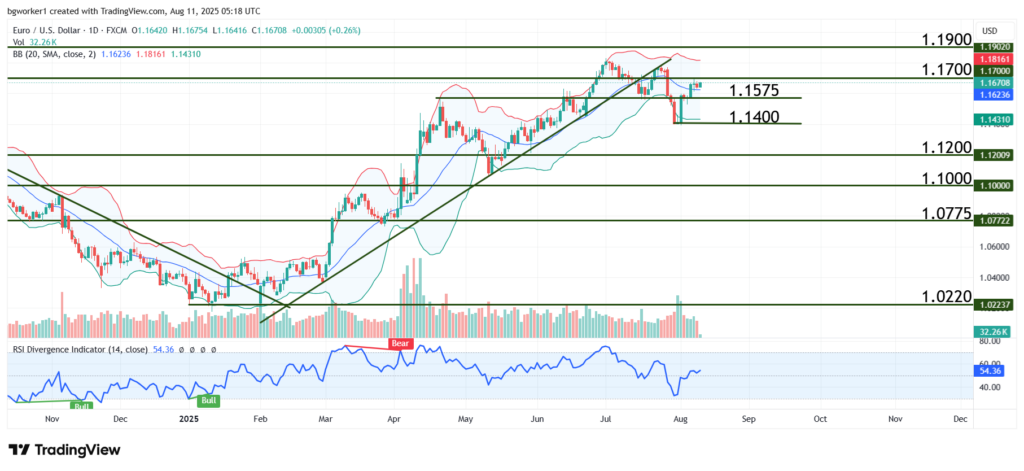USD Weakened by Prospects of Rate Cuts. New Fed Chair Soon?
EUR/USD at Resistance. U.S. Inflation Data and Retail Sales to Decide Next Move
The dollar gained on Friday but still ended last week at a loss, which is in line with the narrative that the U.S. economy is weakening and that rate cuts are needed. Since the disappointing Non-Farm Payrolls report that came out on August 1, traders are more and more confident that a rate cut is in the books.
According to CME’s FedWatch tool, at the time of writing, there’s an 89% chance the Fed will cut the rate by 25 bps at the next meeting. President Trump is also looking for the right person to replace Fed Chair Jerome Powell once his term is up. The choice will likely affect the dollar, depending on the views of the new Fed Chair regarding the speed of rate changes. According to Bloomberg News, Fed Governor Christopher Waller is a favourite to replace Jerome Powell in May, when his term will end.
Economic Calendar Highlights
The U.S. Consumer Price Index (CPI) will be released on Tuesday at 12:30 pm GMT. This is probably the most important release of the week because the CPI is the main gauge of inflation, and the interest rate decision is tightly correlated. The monthly Core CPI is expected to increase from 0.2% to 0.3%, while the yearly figure is set to increase from 2.7% to 2.8%, according to consensus.
Thursday at 12:30 pm GMT, we take a look at the U.S. Producer Price Index (PPI), which has inflationary implications, but it is not as important as the CPI.
The last major release of the week is set for Friday at 12:30 pm GMT, in the form of the U.S. Retail Sales. This is the main gauge of consumer spending and usually has a big impact, with higher-than-expected numbers strengthening the US Dollar.
Technical Outlook – EUR/USD
After the bounce at 1.1400 support, the euro bulls took control of the price action, but now there’s an important hurdle ahead: the resistance at 1.1700. If this hurdle is surpassed, the next step will probably be a move into 1.1900, a price that was last reached in 2021.
Last Thursday, the pair printed a doji candle right on the resistance at 1.1700. This is an indecision candle and often marks the end of a trend. The move that started at 1.1400 is not considered an uptrend, but the doji is a warning sign nonetheless. On the other hand, the pair just moved above the middle moving average of the Bollinger Bands, which is a bullish sign because the middle line can turn into short-term support.
